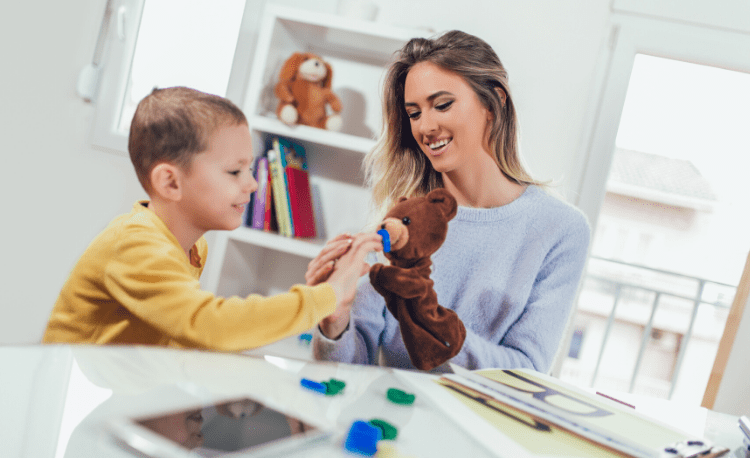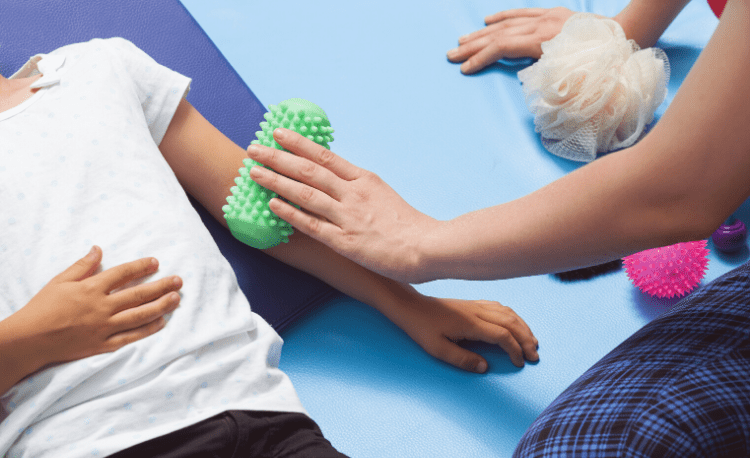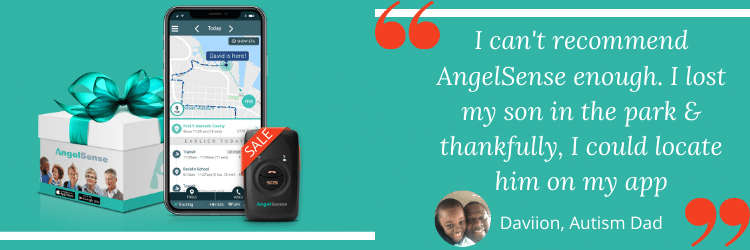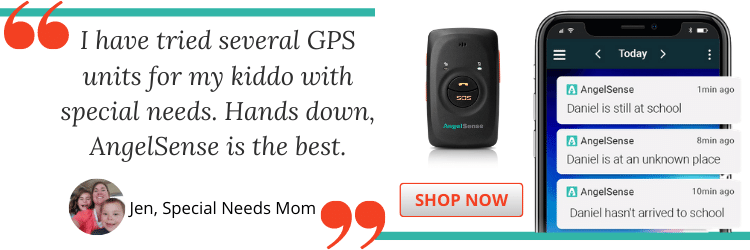Autism Therapy You Can Do with Your Child at Home
Updated on March 11, 2024
Coronavirus has swept across the world, and everyone’s lives have been disrupted in some form or another. With health and government recommended, or even mandated, rules about how the general public should react in order to slow the spread of the virus, flash words used in the media including “quarantine”, “shelter-in-place”, “stay-at-home”, “essential/non-essential travel”, and “social distancing” have become common language over the past couple of months.
However, what does this mean for children with autism? Depending on where a child lies on the spectrum, how old they are, and whether or not there are other comorbid conditions (i.e. language processing disorders) to consider, these changes can prove to be devastating to their daily lives. Even typically-developing children are trying to cope with the new upheaval, so it should come as no surprise that children with autism will likely come with their own set of escalated challenges.
We consulted with an Occupational Therapist and gathered some useful information about what to expect and some autism therapy exercises, tips, and suggestions to help you while your child is at home. Of course, you should always check with your child’s therapist before starting anything new or if you have any concerns about your child’s behaviors and regression.
Potential Behavioral Issues to Expect
Parents. We all know… This will not be easy. As many of you have experienced, when your child’s routine takes an unpredictable turn there are usually inevitable behavioral consequences. “Quarantine” and “shelter-in-place” orders will vary depending in which country and state you reside, but you can expect changes that will directly alter your child’s schedule, including having therapy sessions canceled.
Since many of these changes were made immediately and quite unexpectedly, your child will be going through a difficult emotional process. For higher-functioning children with autism, a thorough and honest explanation about what’s going on in their lives may help. For children who sit along the moderate to severe end of the spectrum, maladaptive behavior will likely occur: increased aggressive behavior towards others, more frequent self-inflicted harm, increased episodes of emotionally shutting down, a digression in their overall development, and elopement to name a few.
Of course, not all children will react in the same way. Depending on the child’s daily schedule, he/she may be temporarily upset if they have learned strategies on how to cope with life’s unpredictability. For children who have followed strict and rigid schedules all of their lives in attempts to reduce difficult behavior, their reaction may be even more severe or prolonged.

Autism Therapy at Home: Where to Start
Start with what you know. If your child is already participating in autism therapy services outside of the home, incorporate their occupational therapy exercises and physical therapy exercises (and speech if that’s included) into an in-home program. If your child’s outpatient clinic has been temporarily closed due to COVID-19 restrictions, consult with the therapists’ by phone, email, or virtual chat if at all possible. Well-seasoned therapists want to see their pediatric clients succeed, so most will not leave parents hanging out to dry in times like these.
Here are a few therapy exercises for home that can be useful for children with autism. Autism Exercises can be physical, cognitive, social, or sensory-based depending on what your child needs. Most therapy will look like play, which is perfect for children with autism. In order to create a therapeutic benefit, be purposeful in your goals, be repetitive in practice, and establish your exercise duration. Again, make sure you consult with your child’s therapists before beginning any new interventions that you are unfamiliar with.
Get a free COVID-19 toolkit and access to 27 evidence based exercises from the Department of Education.

Sensory-Based Therapy at Home
Anytime you perform sensory integration or sensory-based exercises with your autistic child, you should do so with extreme caution. If your autistic child’s occupational therapist already has a sensory diet plan laid out, then the therapist can give you some ideas about how to carry out the plan at home with limited therapy equipment.
If you think your child needs a sensory diet for quarantine, ask the OT about whether or not a Sensory Profile or other standardized evaluation can be performed virtually. If your autistic child has not been seen by OT for sensory-based therapy, check out some of the following resources for some simple activities that can be done at home without posing any therapeutic contraindications for your child. Note, you might be doing some online shopping for cheap toys and activity kits:
Lemon Lime Adventures
Bright Horizons
Mommy Poppins

Physical Therapy Exercises for Autism
Exercise will now be limited to in-home or in-yard participation, save the occasional neighborhood walk. If you are unsure about what exercises to start with or what benefit they would provide your child, consult your child’s physical therapist. Some children with autism seek out exercises for many reasons: aerobics, endurance, emotional self-regulation, deep pressure and proprioceptive input, quick vestibular input, etc.
Here are a few therapeutic exercises that you and your autistic child could participate in together:
- Yoga (Youtube tutorials, online lesson manuals)
- Obstacle course using whatever items or furniture you have available – Check Out These Ideas
- Jumping jacks
- Pushups (from the floor or the wall)
- Relay races in the house or in the yard
- Sit-ups or crunches
- Squats
- Stair relays (retrieving toys to make it more enticing)
- Nature walks or city walks in your neighborhood
- Crawls: bear crawls, crab walks
If possible, let your child experiment with and select their exercise regimens. In some ways, letting them choose the exercises means they are seeking the physical input their little bodies crave. If you’re limited on exercise equipment, talk to your therapists about whether or not they would be willing to loan out items temporarily (i.e. ankle weights, small trampolines, jump ropes, etc.).
For more ideas check out our blog post: 5 Exercises for Children with Autism

Speech Therapy
Practicing articulation, vocabulary, analogies, and sequencing can be crucial to keep your child’s speech therapy on track. Mommy Speech Therapy has some great resources and free downloads and you can find more free downloads from the US Department of Education. Sign language is also a great way to teach communication that often leads to an increase in the ability to communicate verbally. Teach your child new ASL words with this dictionary complete with videos.
Alternative Social Participation
Social interaction is a key part of learning, applying and practicing social skills. While at home, your child will not have the opportunities they have when they’re out in the world. You might have to get creative, but there are still ways you can help them build social skills during this time. If your child is accustomed to communicating with special people involved in their life, such as therapists, friends, schoolmates, family members, and teachers, explore ways for your child to still connect with them from home. Schedule phone calls, work on writing pen-pal letters, or set up times for virtual chat. Even if your child struggles with verbally communicating with others, just hearing their friends’ voices can do wonders for their day and be a great form of social participation, handwriting/typing, and verbal communication exercise.
Caribu is a fun app that makes it easy for friends and family to interact and play games with your child.
Calendar Creation
As part of therapy, and not just schedule maintenance, sit down with your child and create a schedule of activities for the next week or two. Let your child be involved as much as possible in deciding what he/she will be participating in so they can restore some personal control. Give your child some at-home choices and let them select and place those in a realistic order. Remember, this is not going to be smooth at first and your child will bring up and insist on community activities that they simply can’t do. Be ready for the occasional melt-down and come preloaded with alternative choices.
Activities of Daily Living
Part of occupational therapy is addressing the child’s activities of daily living. This includes helping the child become more independent in dressing, toileting, showering, personal hygiene, house cleaning, meal prep, and so on. Since you’re going to be at home for a while, there’s plenty of opportunity to work on those tasks.
Depending on your child’s age and functional severity, create reasonable goals in this area that you can slowly work on together. An example may be, “Tommy will be able to wash his own hair in the shower by two weeks”. Change and update goals based on your child’s reactions and motivation to complete certain goals.

You’re a Parent, Not a Therapist: How are You Going to Pull This Off?
Honestly, this is going to be hard. There are going to be some days where you want to scrap all potential ideas and have your child watch movies or play video games all day. YOU CAN GET THROUGH THIS. Permit yourself and your child to take breaks, to watch T.V., or to participate in a mindless activity because you will both need that time. As long as you come back to structured time and make your best efforts, it can be done.
Check out our list of online Freebies for Kids During Coronavirus
Consult with your child’s therapists when you’re at a loss. Join online group forums with parents who are in your same situation. Ask for help from other family members or friends who can safely step in so you can take a much needed break. Be honest with your child and frequently involve them in making decisions about their own schedule. If plans have to change, be ready to provide alternate activity choices with as much warning as humanly possible. We’re all in the same boat where we’ve lost a lot of control. Doing your very best to help your child with autism gain back some predictability and control over their own lives can make a challenging time a little bit better. Hang in there.
Keeping Your Child Protected at Home
We’re here to help keep your child with autism safe, in our blog post School Canceled? Protect Your Autistic Child During Uncertain Times we go over some of the safety concerns that can arise during a time like this. Our mission at AngelSense always has been and always will be to keep your child with autism and special needs safe. If wandering has ever been an issue, there is a possibility that it could get worse or start again due to today’s circumstances. Our AngelSense GPS Safety Device provides the highest level of protection available and is designed specifically for those with special needs.
Be sure to check out our Facebook Page, Instagram, Blog, and sign up for our newsletter for useful information, tips, and inspiration.
Get peace of mind from AngelSense, the groundbreaking AI-based assistive technology designed to enhance safety and peace of mind for individuals with special needs and their families. Our solution ensures you stay connected with your loved ones, empowering a higher level of independence while maintaining safety. Learn more about how AngelSense can make a difference for your family.





When your child with autism starts to feel frustrated, it is important for them to be able to identify their emotions and to be able to access the tools that will help them to calm and regulate their emotions. Your kid is taught to play with the tools at Autism respite (https://theadventureteam.com.au/) they need in order to seek a break in a calm, comfortable and safe environment.